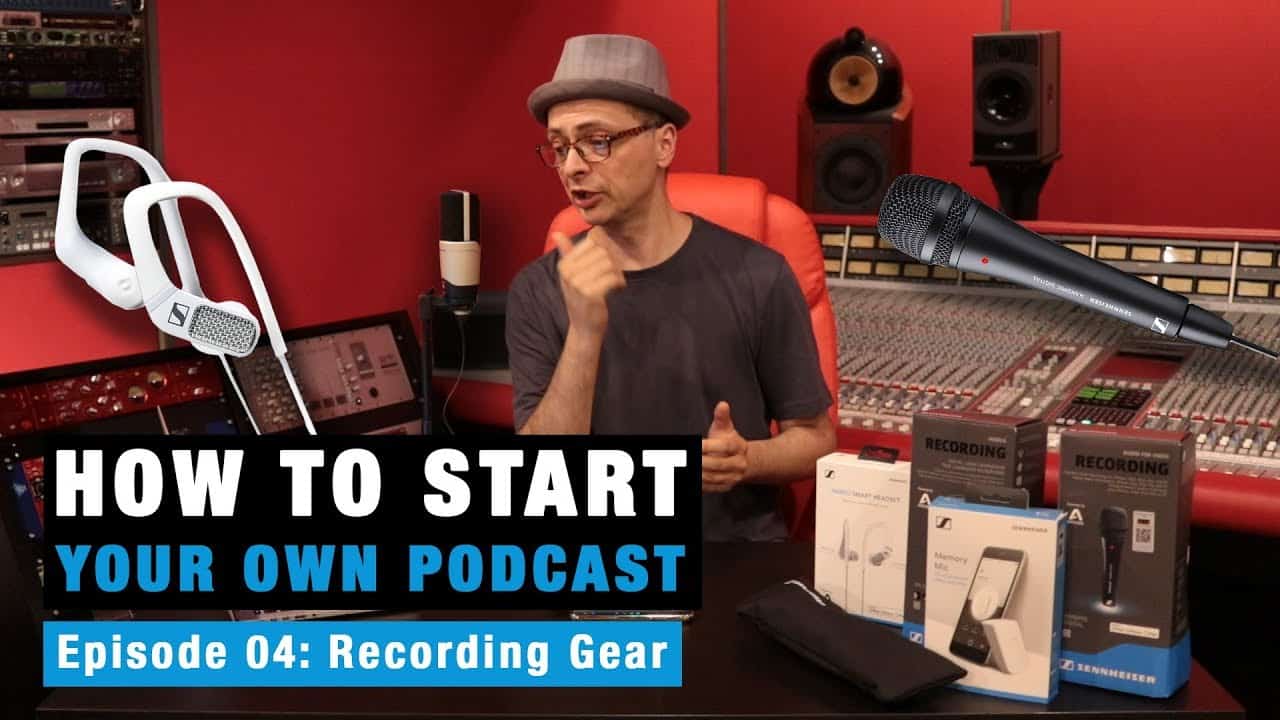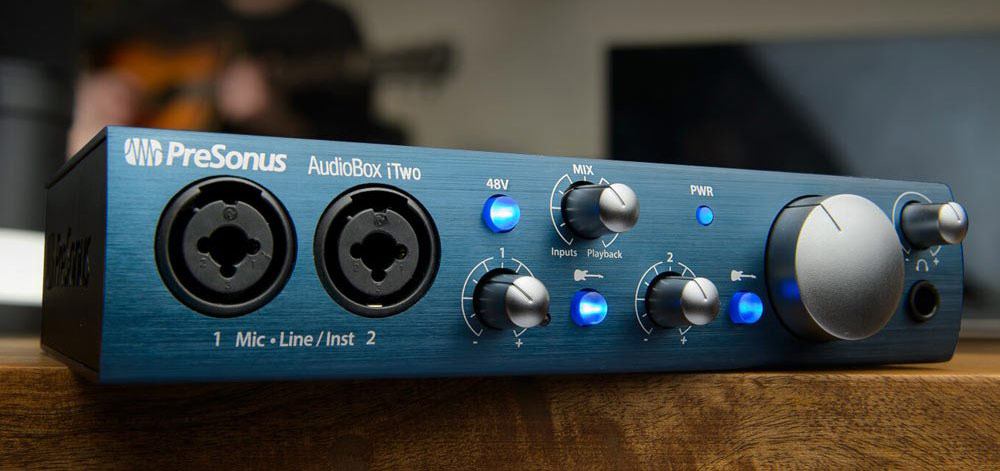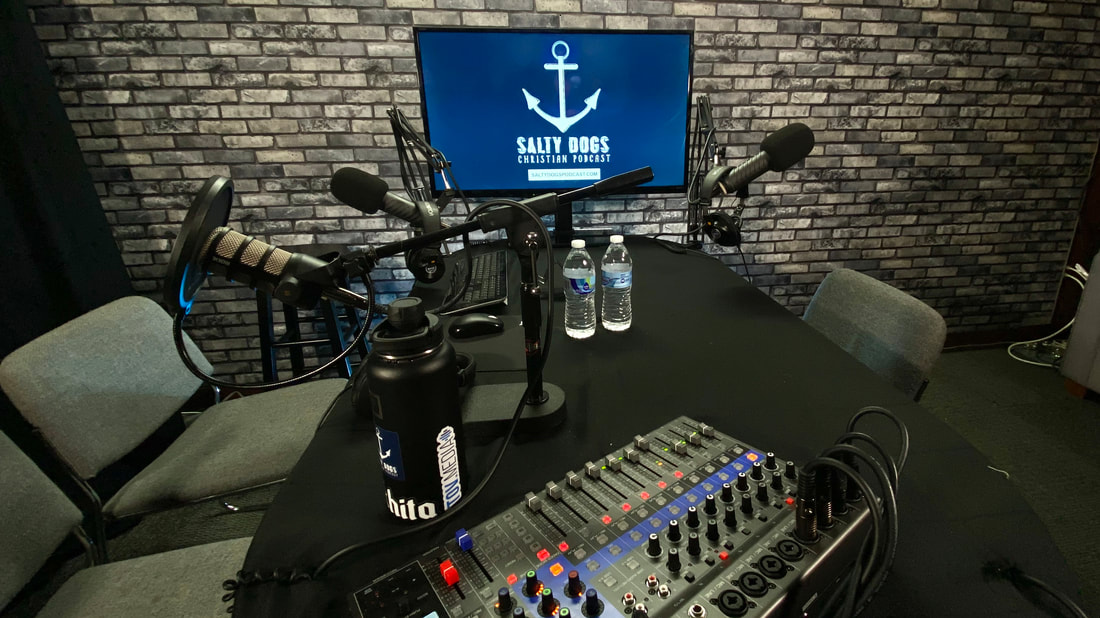
An audio interface is a physical device that transforms analog audio signals from a microphone or an instrument input into digital signals that can be processed by a computer. A podcast audio interface is no different than a digital audio interface you would use for recording any kind of audio.
Full Answer
What are the best audio interfaces for podcasting?
Recommended audio interfaces for podcasting
- 1 Mic basic starter – Focusrite Scarlett Solo (3rd Gen)
- 2 Mics overall best-recommended audio interface for beginners – Focusrite Scarlett 2i2 (3rd Gen)
- 4 Mics recommendation for multiple hosts and guests – Focusrite Scarlett 18i8 (3rd Gen)
Do I need an audio interface for podcasting?
Professional condenser or dynamic mics used for podcasting will require having an audio interface. You will use an XLR cable to connect it to an audio interface and then use a USB cable (in our recommended models) to connect it to your computer.
How to setup your audio interface?
How to get rid of hum and other noises from your audio, video systems
- Ground loops. The number-one cause of unusual audio noise and weird video is the ground loop, simply because it’s so darned easy to create.
- AC line noise. ...
- Wires. ...
- RF interference. ...
- USB/HDMI cable noise. ...
- PC audio noise. ...
- Once you heard it, now you don’t. ...
What is the best audio interface?
- Introduction
- Audio Interfaces Q&A
- Best Audio Interfaces MOTU M2 and M4 Audient EVO 4 M-Audio M-Track Duo Audient iD14 MKII PreSonus Revelator io24 Universal Audio Volt 276 Arturia AudioFuse Studio Focusrite Clarett 4Pre USB

Can you use audio interface for podcast?
An audio interface is not needed to record a podcast or voice-over, but is recommended. You need an audio interface for podcasting to connect pro dynamic mics and capture speakers on separate tracks. USB mics are sufficient only for 1 or 2 people and will create a 1 track recording.
How do I record a podcast using audio interface?
0:0011:28How To Record A Podcast With Scarlett 2i2 Audio Interface - YouTubeYouTubeStart of suggested clipEnd of suggested clipBut if you're doing a home podcast or recording with your voice these two are very capableMoreBut if you're doing a home podcast or recording with your voice these two are very capable microphones. So we're going to put plug both of those in for this. And also we're going to multi-track.
Do I need a mixer and an audio interface for podcasting?
You do need some sort of an audio interface (unless you use a USB microphone) for your podcast. However, you do not need an audio mixer to record your podcast.
What audio interface should I get for a podcast?
Focusrite Scarlett 2i2. The Focusrite Scarlett line is pretty affordable, its units are mostly bus powered (which means the USB cable provides the power), and its built-in preamps are solid. This may be the best “bang for your buck” digital audio interface on the market — you can expect to pay about $180 for the 2i2.
How do professionals record podcasts?
The different ways to record a podcastRecording directly into audio editing software.Recording via video conferencing software e.g. Zoom, Skype.Recording via a remote recording platform designed to record podcast audio.Recording using a portable recording device.
What equipment is needed for a podcast?
For a conventional podcast, you need at a minimum a microphone, headphones, a computer, recording and mixing software, and internet access.
Can you podcast without a mixer?
You don't NEED a mixer to podcast, but getting one can improve your sound quality, increase your flexibility, and save you time! You don't need a mixer to podcast, but there are reason to want one!
Do you need MIDI for podcast?
MIDI is a language that allows electronic music hardware (instruments and computers) to connect and communicate (send MIDI information). The most useful thing you can connect for podcasting is a MIDI keyboard controller.
Is mixer better than audio interface?
A USB mixer will generally have more hardware controls than an audio interface. But usually you will only record a stereo stream from a USB mixer – which will be a mix of all your audio inputs. (Unless you buy a higher end USB mixer with multiple outputs).
Why do you need audio interface for podcasting?
When using a traditional analog XLR microphone to record a podcast, you'll need a USB (or Firewire, or Thunderbolt) audio interface. These can range from tiny devices that plug directly into the microphone, to multi-channel boxes that can connect many microphones simultaneously.
Do podcasts need a sound card?
In order for you to be able to connect an XLR microphone to a computer, you will need an audio-interface sometimes known as a sound-card or an ADDA (Analog to Digital Recording Digital to Analog Playback) converter. These audio-interfaces usually have at least one or more XLR input connections built into them.
Do I need an audio interface?
You'll basically need an audio interface if you want to record to your computer software using microphones, guitar or your keyboard. You'll also need an audio interface if you want to connect your computer to your studio monitor speakers.
What is the presonus audio box?
This USB audio interface boasts a pair of excellent-sounding preamps and up to 24-bit/96kHz recording. It includes +48V phantom power for your condenser mics, a handy clip indicator to ensure proper recording levels, and a separate volume control for your headphones. Best of all, it comes with PreSonus’s Studio One Artist DAW software and over 6GB of bonus content that you’re sure to find useful.
What is a Focusrite Scarlett 2i2?
The Focusrite Scarlett 2i2 is one of our best-selling USB audio interfaces here at Sweetwater. You’ll find it in home studios everywhere. But did you know that it also makes a top-quality podcasting interface? Its XLR/TRS combination inputs work great for mics and instruments alike; its high-performance 24-bit/192kHz AD/DA converters ensure crystal-clear digital sound; and its impressively low latency makes for excellent recordings. Plus, the Focusrite Scarlett 2i2 runs on USB bus power — no wall plug required.
What is the Presonus Revelator Io24?
The Revelator io24 features onboard DSP that can handle independent, fully customized Fat Channel presets for both microphone inputs. Plus, there’s a selection of presets to experiment with. Beyond its awesome effects capabilities, the Revelator io24 comes with a pair of high-headroom XMAX-L microphone preamps that cleanly amplify the loudest laughs and most boisterous co-hosts. There’s also a digital meter loaded onto the front panel so you can keep an eye on your levels. Your Revelator io24 includes a suite of fantastic software to take your productions to the next level.
What is the Sweetwater podcast bundle?
Another popular podcasting bundle here at Sweetwater is the RME Podcast Bundle. This bundle supplies you with a powerful, all-in-one podcasting solution. It all starts with a Babyface Pro. This 12-in/12-out USB audio interface is renowned for its reference-class AD/DA conversion, while the included TotalMix FX software provides you with comprehensive routing and DSP-accelerated EQ, reverb, and delay. This interface is pro-level all the way, with precision metering, two crystal-clear headphone outputs, and a mix-minus set up as separate audio sources. This bundle also includes an Audio-Technica BP40 dynamic mic, which has the distinct ability to reject bad-sounding acoustic environments, plus an ultra-rugged boom mic stand, a super-durable 10-foot mic cable, and an educational course from the Podcast Engineering School.
What is the best phone number for podcasting?
If you need a shiny, new microphone to go with your awesome new interface or if you have any questions about how to make your podcast sound its best, give your Sweetwater Sales Engineer a call at (800) 222-4700. They’ll be happy to help!
What is the best audio interface for podcasts?
Want a top-quality audio interface that’s truly tailor-made for podcasting? If so, the RODECaster Pro should be at the top of your list. This integrated podcast production studio supports up to four presenters, courtesy of four excellent-sounding preamps. Plus, it boasts easy connection to phone, USB, and Bluetooth sources. You also get eight programmable pads for instant playback of sound effects, jingles, and more. You can record your podcasts directly to a microSD card or to your computer while accessing its controls via an easy-to-navigate touchscreen. Simply put, the RODECaster Pro is the audio interface that up-and-coming podcasters pine for.
What is a Zoom H6?
Zoom H6. If your podcast involves any fieldwork, you’ll want a standalone recorder like the Zoom H6 Handy Recorder. This enables you to effortlessly capture audio in the field then take it back to your studio for editing and processing. The H6 is a true hybrid.
What About the Interface Within My Computer?
They’re noisy, unbalanced and made of components with varying degrees of quality in order to keep costs down. This applies to the interface on smartphones as well.
What is the most popular USB audio interface?
The Focusrite Scarlett 2i2 – The most popular USB audio interface on the planet!
What is an audio interface?
The term refers to any device that converts analog audio into a computer-readable digital format. Audio interfaces come in all shapes and sizes. There’s the built-in sound card inside your computer. There’s tiny little USB dongles. There’s the circuitry built into a USB microphone.
What is MIDI port?
MIDI Ports. MIDI is used primarily for communicating between sequencing software and digital instruments and equipment. MIDI can also be used to control external peripherals like rackmount reverb modules. Unless you are a musician, a sound designer or a lighting designer, you likely don’t need MIDI ports.
What is the best app to record podcasts?
Most podcasters don't need to use anything as complicated as Pro Tools for their audio production. Audition and Audacity are two popular choices, whilst Alitu is the easiest way to record, edit, and produce a podcast.
How many inputs does an audio interface have?
Audio Interfaces typically have two inputs and two outputs (2×2). Some have four inputs and two outputs (4×2). It’s important to know how many devices you intend to connect to your audio interface in order to determine number of input and output ports. Multiple monitor combinations (5.1, quad, 7.1, etc) require an output for each monitor.
What is an analog input?
Analog Inputs and Outputs are one of the most important items to pay attention to. Typical external sound cards support both XLR and balanced TRS (¼”) cables, often in the same port (referred to as a combo connector). Ensure you use a balanced connection to avoid unwanted electrical interference. And make sure the audio connections on your interface match the connections on your microphones, monitors and other equipment.
What USB type do I need for podcasting?
Most are USB 2.0 but there are a couple that use USB 3.0 along with newer models using Type-C. For podcasting and solo recording for most people, I would recommend starting in the ‘2×2’ section. If you have MIDI equipment that doesn’t connect over USB, look just below that in the ‘2×2 with MIDI’ section.
What is USB audio interface?
A USB audio interface lets you convert your analog audio signals (i.e. your voice) into a digital signal for your computer. They can vary in quality, features, inputs & outputs, and more. They all have mic preamps built into the XLR inputs, and at least one output for monitoring speakers or headphones. Compared to a built-in sound card, you’ll ...
What is the USB interface for the Steinberg UR12?
Similar to the Scarlett Solo above, the Steinberg UR12 USB interface has 1 XLR input with phantom power and 1 instrument input (but it’s not switchable to line level). It’s made to be used on a laptop, desktop, or iPad with ease.
What is the difference between Studio One 3 and Studio One 26?
Like I mentioned above, all PreSonus interfaces come with Studio One 3 Artist DAW for free ($100 value). The PreSonus STUDIO 26 is a higher end USB interface. It has 2 XLR/combo jack inputs, 2 balanced 1/4″ TRS line outputs, 2 balanced 1/4″ TRS main outputs, MIDI I/O, and a headphone output.
Is Mackie Onyx Blackjack 2x2 USB?
The Mackie Onyx Blackjack 2×2 has somewhat of a unique form factor compared with many of the other USB interfaces. It’s propped up at an angle for easy use of the controls and all the cable inputs are on the back, giving it a nice and clean feel even when everything is plugged in.
Priorities in Rating for Podcasting and Voice overs
Looking for the best audio interface for podcasting and voice-overs, our highest priorities were sound quality and ease-of-use. We unboxed and tested these six popular interfaces to find our favourite.
The Test: 6 Audio interfaces, Same Mic
We tested these six audio interfaces recording with a Neumann TLM 102 Microphone, Logic Pro X, with zero compression or EQ added. (for more info on mic choice, check out some of our mic reviews .)
Focusrite Scarlett 4i4 (3rd Gen)
Ideally priced with two XLR inputs, built-in loopback software, and crystal clear pre-amps.
Audient ID4
A quality audio interface that works like it should at a good price. A machine would serve any podcaster or voice over artist well.
What color is the Presonus Audiobox?
The AudioBox also links directly with Capture Duo for iPad, a dedicated app that allows for one-tap recording. For podcasters who are not already working with a recording software or app they like, this could be one small advantage. Of course, there is also the difference in color, with the Scarlett interface being a red color and Presonus AudioBox a metalic blue.
How much does the iMovie interface weigh?
The interface works with iOS, macOS, and Windows devices, as will most newly released interfaces you encounter. At just 1.32 pounds, it is incredibly lightweight and compact and in addition to being very easy to set up, it is a great option for recording on the go.
What is a Focusrite 2i2?
The 2i2 from Focusrite is an incredibly popular, compact audio interface with two XLR inputs, 48V power, direct monitoring and a headphone jack for monitoring. The interface is powered over USB 2.0 and both the XLR inputs and the headphone jack have their own gain control for precise audio levels.
How much does the AI-1 weigh?
The real selling point of the AI-1 is the sound quality and the fact that it is not compromised by the small, minimal design. At just 1.1 pounds with an incredibly small footprint, this is a great interface to keep permanently on a desk or workstation.
Do computers have built in audio?
While many computers do have good internal built-in sound cards, these external devices are specially built to capture robust audio and have mic-preamps built into the XLR cable inputs that will get you better sounding audio than an XLR mic typically does. These interfaces vary a lot in size, price and function and the right USB audio interface ...
Is USB audio better than microphone?
USB audio interfaces vary in quality, features and input options but will almost always give you a better sounding audio file than recording with a microphone that connects directly to your computer with a USB. If you are deciding between purchasing a mixer and a USB audio interface, remember that a mixer does not actually record your audio ...
Can you use a USB audio interface to record audio?
Fulfilling a similar function as an audio mixer in some ways, a USB audio interface can allow you to connect any microphone to a computer or iPad to record audio files and handle multiple tracks at once. USB audio interfaces vary in quality, features and input options but will almost always give you a better sounding audio file than recording with a microphone that connects directly to your computer with a USB. If you are deciding between purchasing a mixer and a USB audio interface, remember that a mixer does not actually record your audio and would still need to be connected to a laptop or other recording device, so in some cases an audio interface can be advantageous.
